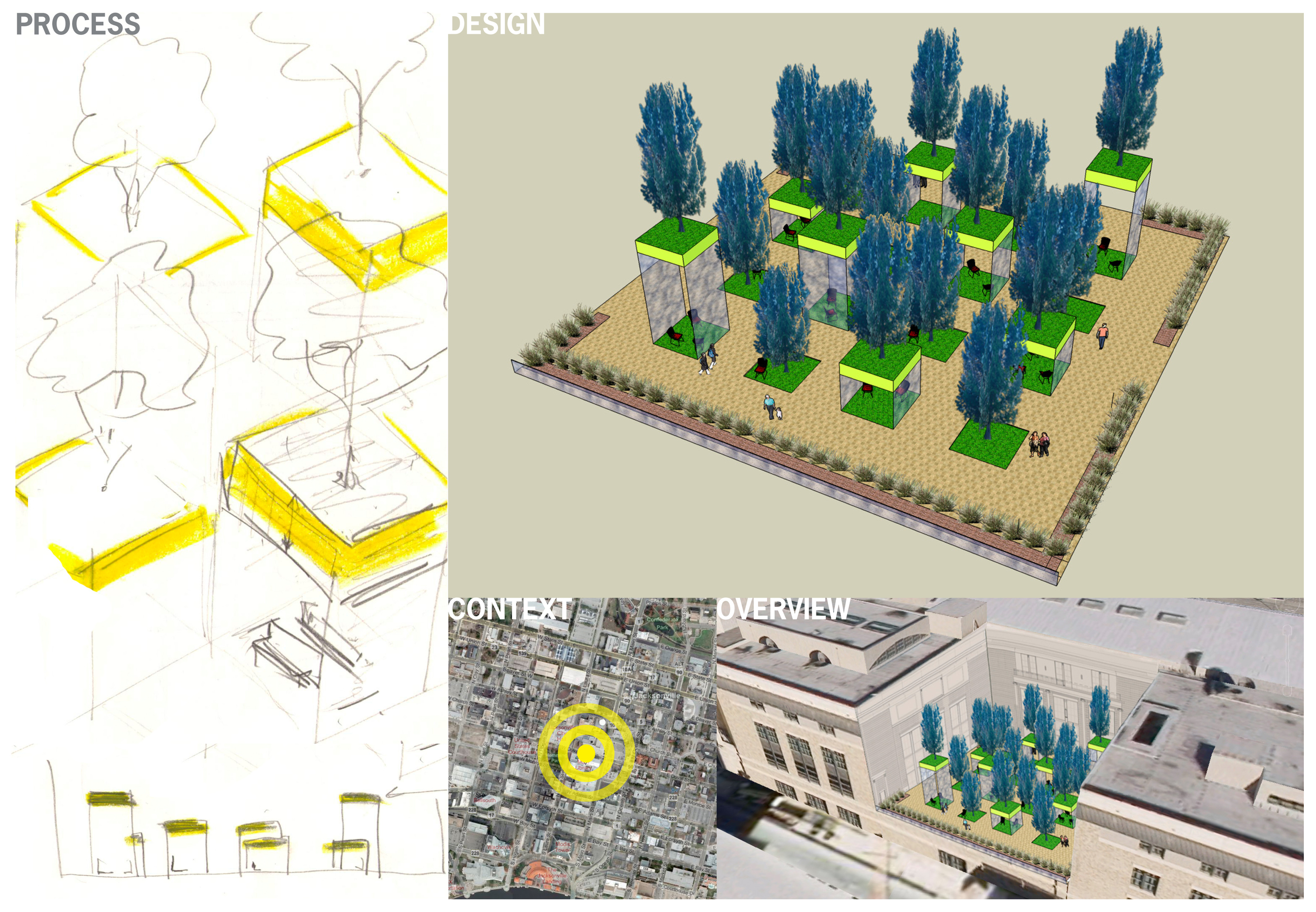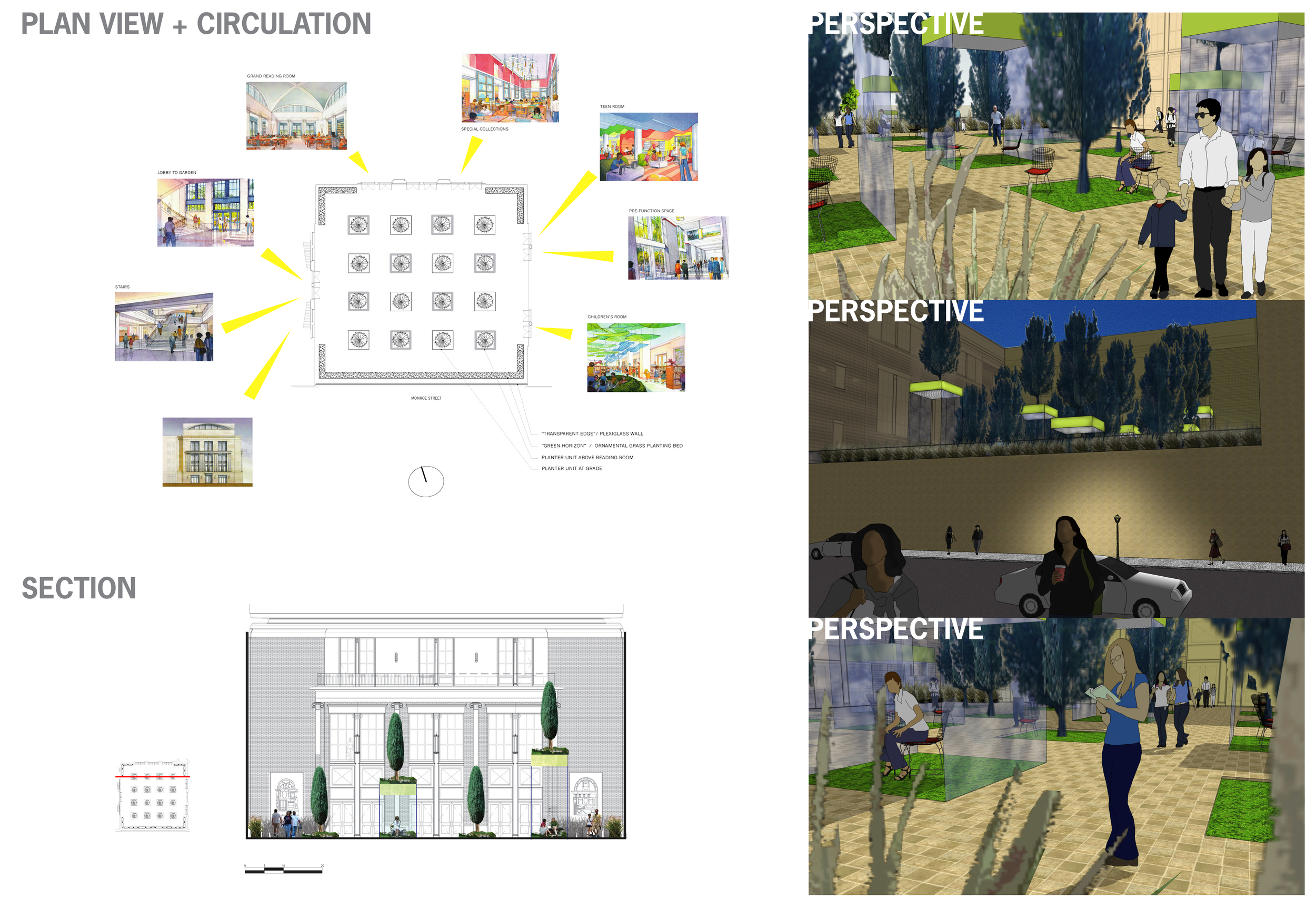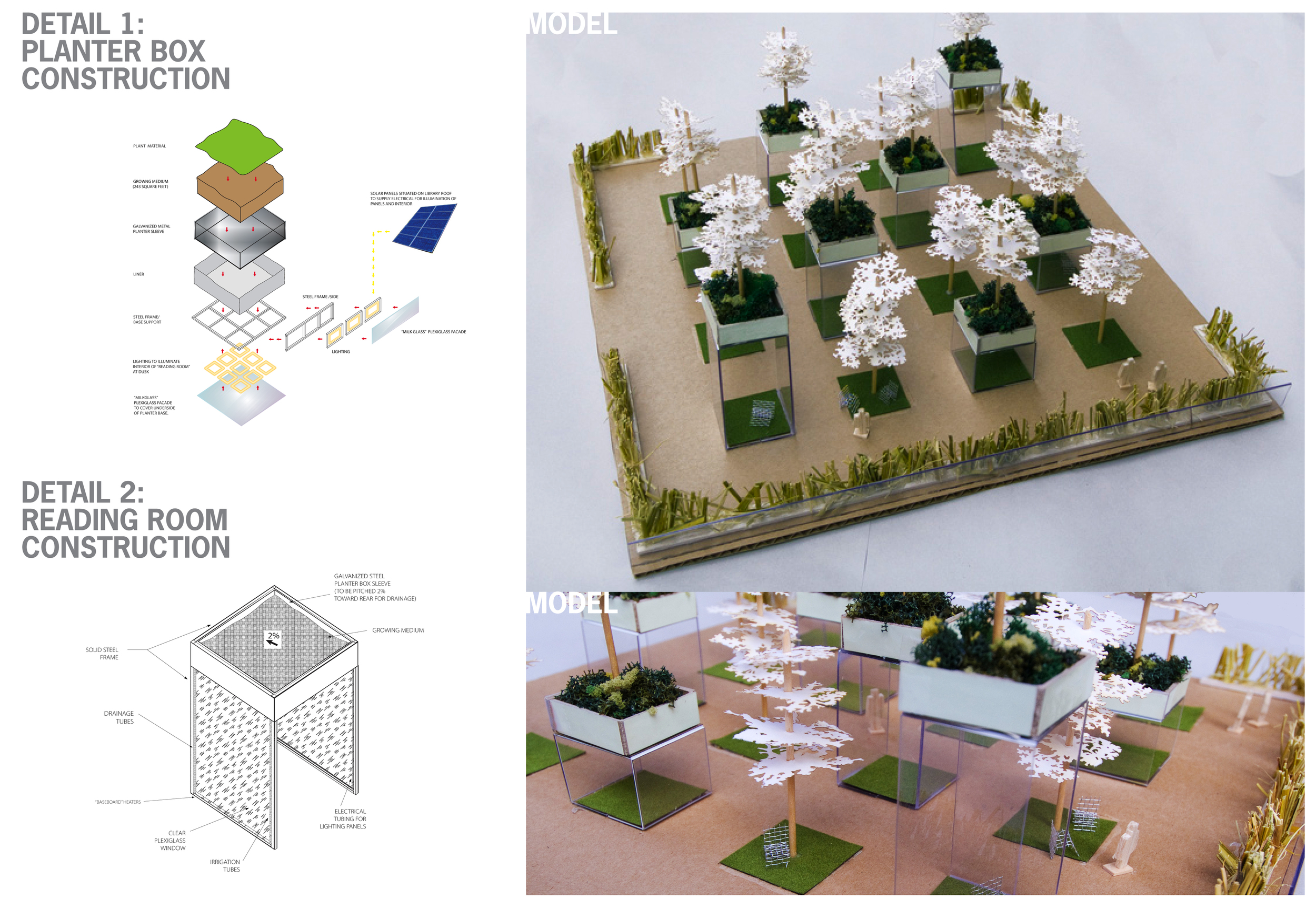VERTICAL LANDSCAPE DESIGN - "READING ROOMS"
This project was selected and featured from an international call for entries on Vertical Gardens. An exhibition of architectural models, renderings, drawings, photographs and ephemera that depict or imagine a vertical farm, urban garden or green roof. Featuring over 20 projects, both imaginary and real, by artists and architects that envision solutions for building greener urban environments. This exhibition and opening was held at ExitArt galleries in Manhattan in 2010 and subsequently toured the United States. Featured on the ASLA website + blog. “Reading Rooms” also had the distinct honor of being featured in the 6th Annual European Biennial of Landscape Architecture in Barcelona, Spain.
Project: Design an above-grade, on-structure courtyard for the Jacksonville, Florida Public Library building designed by the firm, Robert A.M. Stern. Courtyard is to be a roof garden space above the mezzanine level, surrounded on three sides by structure yet open with a view on the southern exposure side. Building drawings were supplied; program was developed based upon the Jacksonville Library’s existing and anticipated future needs.
Creation: The design addresses the awareness, promotion and implementation of a sustainable environment, renewable energy sources and associated technologies within the learning environment of a library. There is a tremendous opportunity inherent in building this design to incorporate and educate users, students and visitors on these lessons within a library and a public setting. From an aesthetic and structural perspective, the program addresses the following: 1) considers the courtyard as a conduit of nature, (2) takes advantage of the “verticality of space”, (3) articulates itself to the pre-existing aesthetic, and (4) creates intimacy within a public realm.
GRID DESIGN
This roof garden is created with an overall grid design. Entrances to the garden from surrounding structures on all three sides become linked allees with a dual axis aligned between them. Antithetic to the precedent of a traditional library reading room (which is typically designed as a “war room”), this design proposal creates exterior “READING ROOMS.” These rooms can be enjoyed in solitude or in small groups; seating is flexible – chairs can be within the room or outside them. Each structural room within the courtyard maintains its own green roof.
THE OUTDOOR ROOM
10’ square outdoor “rooms” are envisioned, constructed with a framework of recycled steel. Plexiglass walls will be attached on opposite sides with the two remaining sides open. Lighting panels surround the exterior facade of the plant container unit, which sits above the room. When viewed at night, the illuminated panels covering these plant containers create a surreal effect of floating books. These reading rooms are fitted with interior lights for reading at dusk, as the library maintains evening hours.
Hidden within the steel framework of each room are irrigation and drainage tubing to supply the plant material above. Also hidden within the steel framework are electrical cables to power the exterior light panels encasing the plant and the interior reading lights. The electrical power is sourced via the renewable energy of the solar panels on the Library’s roof.
The Jacksonville Library is a five-story building with a footprint that occupies the majority of a city block. Considering the enormity of the roofs surface, there is substantial stormwater run-off. This proposal envisions captured rainwater/stormwater run-off, harvesting graywater and creating storage for this in cisterns or rain barrels. Irrigation of low-water-demand vegetation would be implemented with climate-based controllers on a drip irrigation system.
Hardscape surface to be created out of recycled material – cobbles for the floor, brick surrounding the planters. Tall native grasses at the southern edge form a natural looking boundary obscuring the invisible edge of the plexiglass wall beyond it. The choice of structural evergreens as plant material within each roof container contributes to complementing the classic, formal design of Robert A.M. Stern’s architectural aesthetic for the building. Library executive offices, meeting rooms on the higher floors and public rooms on the lower floors all have equal views to the multi-level plant material.
The design of reading “rooms” within a garden metaphorically pays homage to the garden designer’s lexicon, which commonly refers to gardens as outdoor rooms.



